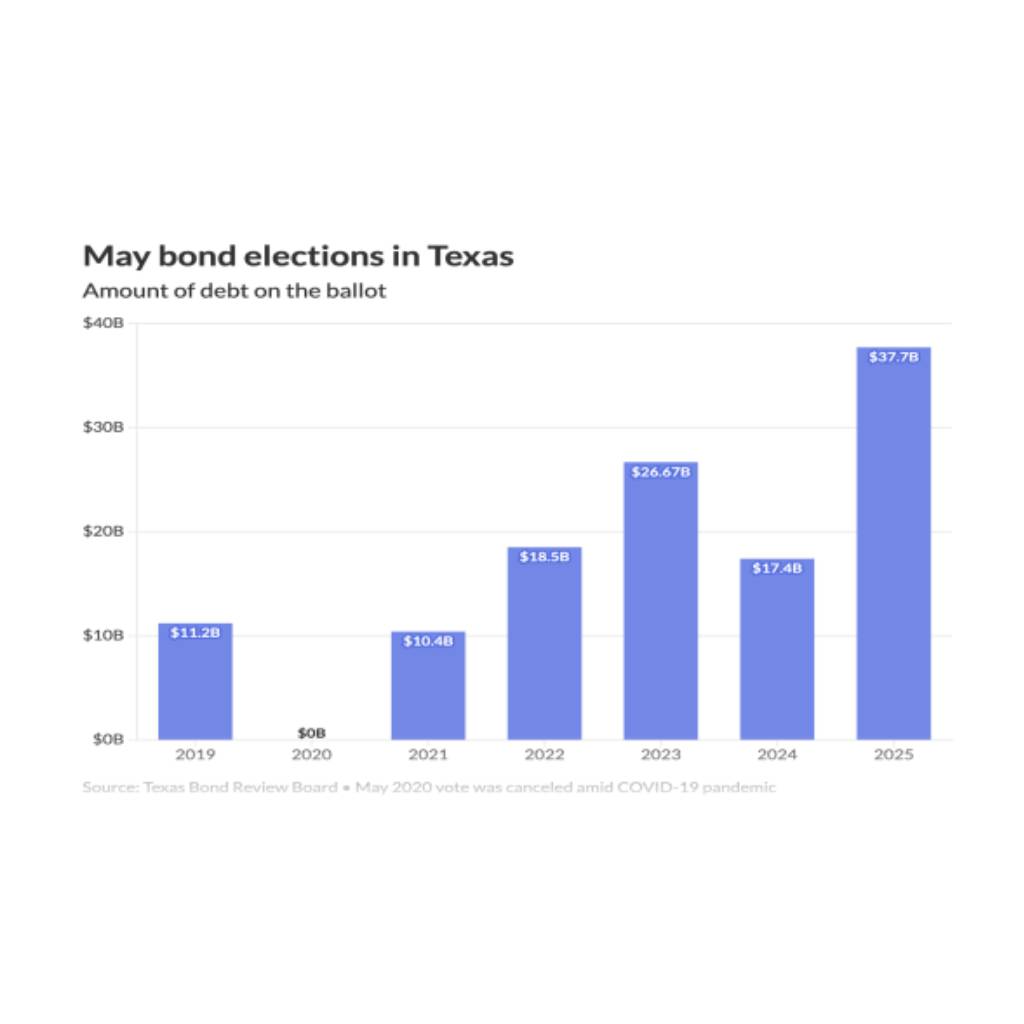Most people assume that once voters approve a Capital Improvement Program (CIP) bond election, the heavy lifting is over-and the projects can immediately break ground. In reality, that approval merely unlocks the next, highly regimented phase: the Texas Attorney General’s review and certification. We field questions about this “hidden” process all the time, so to cut through the confusion, this guide will walk you step by step through what happens after election night, how to assemble a compliant bond transcript, and why AG certification is the indispensable final hurdle before any bond proceeds can be spent.
Legal and Procedural Framework
The Texas Attorney General (AG) plays a critical legal oversight role in all municipal bond issuances. State Law Requirement: Texas law mandates that any public security issued by a local government must be reviewed and approved by the AG before it is delivered to investors. This applies to all types of municipal bonds – general obligation bonds, revenue bonds, and others – with only narrow exceptions for certain short-term or small-dollar obligations. If a bond is subject to AG review, an issuer is prohibited from issuing it without first obtaining the AG’s approval.
Constitutional Basis: The requirement for AG approval is rooted in Texas’s constitutional and statutory framework. The Texas Constitution imposes strict conditions on local debt: no city or county may incur any debt unless, at the time of creation, it also provides for a tax to cover interest and a sinking fund of at least 2% of principal. In practical terms, this means general obligation bonds (backed by property taxes) must be tied to a sufficient tax levy to repay them. Texas Constitution Article XI, §7 (applicable to cities and counties) embodies this principle, and Texas courts have long interpreted “debt” in this context to include most multi-year obligations unless payable from current revenues.
Voter Approval for Tax-Supported Bonds: To enforce the constitutional funding requirement, state statutes require voter approval for bonds paid from property taxes. Texas Government Code §1251.001 explicitly provides that a county or municipality cannot issue bonds payable from ad valorem taxes without first obtaining approval from the qualified voters in an election. In other words, general obligation (GO) bonds that rely on property taxes must be authorized by a bond election. This ensures the taxpayers agree to the new debt and accompanying tax levy. By contrast, bonds not backed by property taxes (such as many revenue bonds) may be issued without an election, as discussed further below. The authority for cities to issue GO bonds is codified in Government Code Chapter 1331, and for example, Chapter 1331.052 requires that home-rule cities hold an election and get majority voter approval before issuing such bonds. State law also outlines how bond elections must be conducted (e.g. notice, ballot format), as addressed later.
AG Review Process: The Public Finance Division of the Office of the Attorney General reviews the “record of proceedings” for each bond issue to ensure the bonds were authorized and will be issued in strict compliance with law. The AG’s review is legal in nature – the office examines whether the issuance meets all constitutional, statutory, and procedural requirements, but does not judge the financial merits of the project or the wisdom of the debt. Key legal elements include confirming the issuer’s authority to issue the bonds, the legality of the purpose for which debt is being issued, and the legality of the pledge (whether of taxes or revenues) securing the bond. For example, the AG will verify that the bond’s purpose is one authorized by law for that issuer (and is a valid “public purpose”), and that any tax or revenue pledged for repayment is permitted by statute and (if a tax) by the Texas Constitution. If the enabling law or the bond proposition required any conditions precedent – such as public notices, an election, or approval by another agency – the AG will require proof that those conditions were satisfied. Only if the Attorney General determines the bonds have been “authorized to be issued in conformity with law” will approval be granted.
Approval, Registration, and Incontestability: Upon determining that all legal requirements are met, the Attorney General issues an approving legal opinion and certifies the bonds as valid. The AG transmits the approval and the bond transcript to the Texas Comptroller of Public Accounts, who then registers the bonds in official records. After these steps are completed and the bonds are delivered to the purchasers, the bonds attain a special legal status: they become valid and incontestable obligations for all purposes. This means that their legality cannot be challenged in court except on very narrow grounds such as an alleged constitutional defect. Texas law states that a public security, once approved by the AG and registered by the Comptroller, is “incontestable in any court or other forum” and is binding according to its terms. For instance, in any lawsuit to enforce payment of a city or county GO bond that was approved by the AG, the AG’s certificate of approval is admissible as conclusive evidence of the bond’s validity. This statutory incontestability provides assurance to bondholders that the debt’s legality is settled – a feature that helps the bonds carry higher credibility in the market.
In summary, the legal framework requires that after a successful bond election (for GO bonds) the issuance process is not complete until the Attorney General has reviewed the bond proceedings and formally certified that the bonds comply with all laws. This AG certification, followed by state registration, confers strong legal validity on the bonds. Both the Texas Constitution and statutes (notably Government Code §§1202.003-.006 and Chapter 1251) underlie the Attorney General’s role in safeguarding the legality of municipal bond obligations in Texas.
Documentation Requirements for Attorney General Review
Following a bond election and the governing body’s authorization of the bonds, the issuer (typically with the help of bond counsel) must assemble a bond transcript (also called the record of proceedings) to submit to the Attorney General. This transcript is a comprehensive compilation of all documents and evidence demonstrating that the bond issuance is lawful. Texas Administrative Code (Attorney General’s rules) §53.3 specifies the contents of a municipal bond transcript in detail. In general, the transcript must include all bond authorization documents and various certificates to establish the statutory authority for the debt, the legality of the pledge, and compliance with any prerequisites. Key documentation requirements include:
- Election Documentation (for voter-approved bonds): If the bonds were authorized by an election, certified copies of the election proceedings must be provided. This typically consists of: the order or ordinance calling the election, with all required details (e.g. date, proposition language); proof that the election was properly noticed (affidavits of publication and/or certificates of posting of the notice in all required languages and locations); the canvassing certificate or ordinance showing the official vote tally and declaring the proposition passed by the voters; and a certificate of election code compliance (usually part of a general certificate) confirming that all Election Code requirements were met (such as timely notice to the county clerk per Election Code §4.008 and compliance with bilingual notice laws). These documents prove that the bond election was conducted lawfully, which is essential since the AG will not approve bonds if there were material irregularities in the election process. (If any special type of election was involved – for example, creation of a new taxing district or a home-rule charter adoption – those certified results must be included as well.)
- Authorizing Resolution/Ordinance: A certified copy of the bond ordinance or resolution passed by the issuer’s governing body authorizing the issuance of the bonds must be included. This is the document in which the governing body formally sets the terms of the bonds (amount, maximum interest rate, maturity, etc.) and pledges the repayment source. The ordinance should recite the legal authority for issuing the bonds and include any required findings or provisions mandated by law. For example, a GO bond ordinance will contain the levy of an annual ad valorem tax sufficient to pay debt service (satisfying the Article XI, §7 requirement) and usually reference the voter authorization. A revenue bond ordinance will include the pledge of specified revenues (such as utility system revenues) and often covenants to maintain rates or funds as required. The AG will check that the ordinance/order conforms to the authority granted by the voters (for GO bonds) and to the statutory authority. If a trust indenture or similar contract is used (more common for revenue bonds), that document must also be included and approved by the governing body, since it governs the bondholders’ rights.
- Executed Bond and Signature Certifications: The initial bond (a physically executed bond, usually the first bond of the issue) or a specimen, signed as required, is typically included. Along with that, the issuer must provide a Signature Identification and No-Litigation Certificate signed by the officials who executed the bonds. This certificate serves two purposes: (1) it certifies that the signatures on the bonds are genuine (often verified by a notary or bank officer), and (2) it affirms that no litigation is pending or threatened that would challenge the bond issue or the issuer’s ability to levy taxes or collect revenues for repayment. It also states that no one is contesting the issuer’s corporate existence or the officials’ titles. This no-litigation statement is crucial, as the AG will not approve bonds if there is an active lawsuit questioning their validity.
- General Certificate of the Issuer: Texas AG rules require a general certificate executed by authorized officials (often the chief executive or finance officer and the governing body’s secretary or clerk) covering numerous general representations. In this certificate, the issuer typically attests to facts such as: the total outstanding indebtedness of the issuer and a schedule of all debt service requirements (including the new bonds); for ad valorem tax debt, the current taxable property values and (if the issuer assumes a tax collection rate above 90%) the historical tax collection rate, to show the tax base for repayment; for revenue bonds, a history of the pledged revenues for the last three years or a projected revenue statement if historical data is insufficient (accompanied by an engineer’s or consultant’s certificate if the projection is based on a system expansion); a statement of the operating and maintenance expenses of the system for the last year (to evaluate net revenues for revenue bonds); a certification of the city’s type and population if it is a general-law city (since debt limits differ by city type); and, for home-rule cities, the date of the last charter amendment and copies of any new charter provisions (since the AG will review the charter for any debt limitations or requirements). The general certificate essentially puts in one place the key financial and legal facts about the issuer and the bond issue that demonstrate compliance with law (for instance, that the new debt will not exceed any statutory or constitutional caps and that all prerequisites like elections have been met). It often also includes a statement that all actions were taken in accordance with open meetings laws.
- Incumbency and Meeting Certificates: The transcript will contain certifications to establish the legal authenticity of the governing actions. A certificate of incumbency verifies the names and titles of the officials in office (especially those who signed bond documents). Additionally, for each resolution or ordinance passed (such as the election order, canvassing order, bond ordinance, etc.), there should be a certified extract of the governing body’s minutes or a certificate of action attesting that the meeting was duly convened with a quorum, that the action was adopted by the stated vote, and that the meeting complied with the Texas Open Meetings Act. If any special (called) meetings were held, and any members were absent, acknowledgments of notice from the absent members are included to prove they received proper notice of the meeting. These certifications guard against any procedural challenge (like a claim that the bond ordinance was not passed legally).
- Financial and Sale Documents: If the bonds were sold via competitive bidding, the winning bid form or bid tally must appear in the transcript to evidence the interest rate and terms on which the bonds were sold. If the bonds were sold by negotiated sale to an underwriter or by private placement, a copy of the bond purchase agreement (executed by the underwriter and the issuer) is included. The Official Statement (the disclosure document for the bond offering) or other offering circular is also typically provided – a preliminary OS can be submitted initially, with the final OS to follow for the AG’s records. While the AG doesn’t opine on the offering statement’s adequacy, having it on file is required by rule and helps the AG ensure all material actions and terms are documented.
- Ancillary Agreements and Certificates: Any Paying Agent/Registrar Agreement (the contract with the bank or entity that will handle bondholder registrations and interest payments) should be included in substantially final form. If bond insurance or another credit enhancement is used, the transcript needs the bond insurance commitment or policy and evidence that the governing body approved the insurance and authorized any related agreements. If the bonds are subject to oversight by the Texas Bond Review Board (generally this applies to certain state-level issuers and some conduit financings), any required Bond Review Board information form or approval must be included as well. Additionally, if the issuer intends to reimburse itself for prior expenditures from bond proceeds (common for projects already started), the transcript should contain the reimbursement resolution or documentation showing compliance with IRS reimbursement rules.
All documents in the transcript must be properly certified or executed as true and correct copies of the originals, with required signatures and seals in place. The Attorney General’s rules detail formatting requirements (e.g. paper size, organization with a table of contents and tabs) to ensure a clear record. The issuer also must pay the statutory filing fee when submitting the transcript: the fee is 0.1% of the bond principal amount, capped at $9,500 (minimum $750).
By reviewing this comprehensive transcript, the Attorney General’s office verifies every legal facet – from the initial election to the final sale – before giving its stamp of approval. Missing or inadequate documentation is a common cause of delays, so bond counsel take great care to ensure the transcript is complete and in the format the AG requires.
Timeline from Submission to Certification
The process from a successful bond election to final Attorney General certification follows a general timeline, though the exact timing can vary with circumstances. Below is the typical sequence of events and time frames:
- Post-Election Waiting Period: After a bond election is successful, there is a built-in waiting period before bonds can be approved. Under the Election Code, there is a window (generally 30 days after the official canvass of the election) during which an election contest can be filed. The Attorney General, by rule, will not approve the bonds until this contest period has expired without any challenge, or (if a contest is filed) until the contest is resolved in favor of upholding the election. This means the issuer must usually wait about a month after canvassing votes to ensure the election results are uncontested before proceeding to closing. (For revenue bonds that did not require an election, this step is not applicable, and the process can move forward as soon as the governing body authorizes the bonds.)
- Transcript Preparation and Submission: During the waiting period, or thereafter, bond counsel prepares the transcript (as described above). When the transcript is ready in substantially final form, it is submitted to the Public Finance Division of the AG’s Office. The deadline for submission is generally at least 10 business days before the planned bond closing date for traditional public bond issues. (Certain types of issues, such as conduit revenue bonds for non-governmental borrowers, require a 12-business-day lead time.) In practice, many bond counsel aim to get the transcript to the AG even earlier to allow time for any corrections or questions. Along with the transcript, the issuer will pay the required AG review fee at this time.
- Attorney General Legal Review: Once received, the bond transcript is assigned to an assistant attorney general (public finance attorney) for examination. The AG’s review is thorough – the attorney checks each document for legal sufficiency (e.g. confirms the election notice dates were correct, the numbers in the debt service schedule make sense, the ordinance contains the proper tax levy language, etc.). If the reviewing attorney finds any deficiencies or has questions, they will typically contact bond counsel for clarification or request supplemental documentation. It’s common for there to be some back-and-forth during this period. Substantially complete initial transcripts are required at least 5 business days before closing, and the goal is to have all open issues resolved by about a week before closing.
- Preliminary Approval (Conditional): In general, if the transcript review is going smoothly, the Public Finance Division aims to issue a “preliminary approval” letter about five business days before closing. This letter indicates that the Attorney General’s office has reviewed the submitted documents and, barring any last-minute changes or issues, finds them acceptable. Essentially it’s a signal to the parties (issuer, underwriters, etc.) that the legal approval is on track. Any remaining conditions to be satisfied (for example, receipt of a final Official Statement or an updated certificate) will be noted.
- Final AG Opinion and Certification: Once all requirements are met, the Attorney General formally approves the bonds and issues the final approving legal opinion. According to the AG’s guidelines, the final approval (with release of the bonds and the AG’s opinion) typically occurs two business days before the closing date of the bond issue. (For bonds being purchased by certain state agencies, like the Texas Water Development Board, the AG releases approval about five days before closing to accommodate their procedures.) The AG’s legal opinion is an official document stating that the bonds are issued in conformity with law and are valid and binding obligations.
- Comptroller Registration: Immediately after approving the bonds, the Attorney General’s office forwards the opinion and the record of proceedings to the Texas Comptroller of Public Accounts. The Comptroller’s role is largely ministerial but important: the Comptroller registers the bonds in the state’s bond register and manually affixes a registration certificate (or CUSIP numbers, etc., depending on modern practice) to the bond records. The Comptroller’s registration is the final step required by law to complete the issuance process for public securities in Texas.
- Delivery and Closing: On the scheduled closing date, the bonds are delivered to the purchasers and the issuer receives the proceeds. At this point – having been approved by the Attorney General, registered by the Comptroller, and exchanged for payment – the bonds are considered fully certified and incontestable under Texas law. The issuer and its taxpayers or revenue payers are now legally bound to the repayment obligations, and the bondholders can rely on the Attorney General’s approval for the security of their investment.
From start to finish, a typical GO bond issue might take roughly 6-10 weeks after an election to reach closing with AG approval (accounting for the election canvass, contest period, document preparation, and the AG’s review timeline). The Attorney General’s office publishes calendar guidelines each year, including state holiday schedules and any peak volume periods, so that issuers can plan their submissions accordingly. It’s worth noting that the AG’s timeline commitments (e.g. the two-day final approval window) usually assume the transcript is correct and complete on first submission. If issues are found, the timeline can stretch as additional review time may be needed once corrections are made. Early communication with the Public Finance Division attorneys can help avoid last-minute delays. Overall, Texas’s process is designed to be efficient while still allowing ample time for legal due diligence – ensuring that by the time bonds are delivered to investors, all legal questions have been settled by the state’s highest legal authority for public finance.
Common Pitfalls and Issues That May Delay Certification
While the Texas AG’s review process is well-defined, issuers sometimes encounter pitfalls that can delay or jeopardize bond approval. Below are some common issues and errors that can cause problems:
- Deficiencies in Election Proceedings: Because many municipal bonds (especially GO bonds) require a valid voter election, any misstep in the election process is a serious red flag. Common pitfalls include failure to give proper notice of the election in the manner required by law, or not adhering to required timelines. For example, Texas law requires that notice of a bond election be published in the newspaper for two consecutive weeks, with the first publication at least 14 days prior to the election, and also posted at public locations. Missing a publication or publishing late can invalidate an election. Similarly, not notifying the county clerk of the election or not providing bilingual election materials (when required) violates the Election Code. The AG will scrutinize the election notice affidavits and the certification of Election Code compliance. If any required element is missing (for instance, if the notice was not posted in Spanish when required, or if the canvassing didn’t record the vote totals properly), the AG will likely withhold approval until the issue is cured or a court validates the election. In the worst case, a flawed election might force the issuer to call a new election or abandon the bond issue. Election contests filed by opponents of the bond can also obviously derail and delay the process – the AG cannot approve bonds while an election contest lawsuit is pending.
- Non-Compliance with Ballot Language Requirements: Texas law now mandates clear and specific ballot propositions for bond elections. Each “single specific purpose” for the debt must be stated separately on the ballot (one proposition per purpose), along with the total bond amount and a statement that taxes will be imposed to pay the bonds. A common pitfall (especially after a 2019 law change) is bundling multiple unrelated projects into one proposition or using vague purpose language. For example, a city that tries to pass one bond proposition for “streets, parks, and economic development” together would violate the requirement to separate distinct purposes. The AG will review the ordinance calling the election and the ballot language; if the proposition doesn’t meet the statutory format (omitting the tax levy statement or combining purposes improperly), the election result may be considered invalid. This is a scenario that could prevent certification unless remedied (likely by a re-vote with correct wording). Bond counsel are careful to craft propositions in compliance with Gov’t Code §1251.052, but any deviation can be a fatal flaw caught at the AG stage.
- Failure to Levy Sufficient Tax (for GO Bonds): The Attorney General will confirm that the governing body’s bond ordinance levies an annual ad valorem tax sufficient to pay debt service, as required by the Texas Constitution and statutes. A pitfall here could be a city attempting to issue bonds without explicitly levying a tax for them (for instance, expecting to use existing revenues without a formal pledge). If the bond is a general obligation of the city, the law requires a tax levy for interest and a sinking fund. The AG’s review of the ordinance’s text will catch any failure to include that levy or any cap that could prevent full repayment. Additionally, debt limit issues are checked – for example, counties cannot exceed certain tax rate limitations for bonded debt (a county is generally limited to $0.80 per $100 valuation tax rate, of which the Attorney General will typically only allow $0.40 for debt service without special justification). For cities, if a charter imposes a debt limit or tax rate limit, the AG ensures the new bond will not cause an illegal breach of those limits. Overlooking these constraints can delay approval or force a reduction in the bond size.
- Insufficient Revenue Pledge or Coverage (for Revenue Bonds): When approving revenue bonds, the AG looks for compliance with any statutory requirements for revenue coverage and the practicality of repayment. While the AG does not opine on financial feasibility, they do verify that the issuer has legal authority to pledge the specific revenues and that any required coverage or reserve provisions in law are met. A common issue could be if an older statute (or the city’s prior bond covenants) requires that net revenues provide at least 1.25x coverage of debt service, and the issuer’s recent revenue history falls short. The AG’s rules require a showing of either historical revenue or projected revenue sufficient for the debt. If a projection is used, it must be well-supported (e.g. by an engineer’s certificate if based on future system improvements or rate increases). Inadequate demonstration of revenue sufficiency can lead the AG to delay approval until the issuer bolsters the record (for instance, by raising utility rates, providing additional security, or reducing the debt amount). Another pitfall is pledging a revenue that the issuer has no authority to pledge – for example, a city attempting to pledge sales tax revenue to bonds without statutory authorization. The AG requires citation of specific statutory authority for any pledged revenue source and will reject an unauthorized pledge. Thus, creative or unusual financing structures can draw extra scrutiny.
- Missing or Incomplete Documentation: A very common (but usually fixable) cause of delay is simply omitting required documents or certifications in the transcript. For instance, if the initial transcript lacks an affidavit of publication for the bond sale notice or a required engineer’s certificate for a revenue projection, the AG cannot complete the review until the item is provided. Likewise, if signatures are not properly certified or if the official statement is not updated, the process can stall. The AG’s office expects a fully tabbed and indexed transcript, and any gaps will prompt a request for additional documentation. These are usually resolved by prompt supplementing by bond counsel, but they can push back the timeline if not caught early.
- Pending Litigation or Referenda: As noted, the AG requires a no-litigation certificate and will not approve bonds if there is known litigation challenging the bonds or the issuer’s authority. If, say, after the election a lawsuit is filed alleging the election was invalid or the project is illegal, the AG will halt the approval until the court case is resolved (or unless the lawsuit is withdrawn). Additionally, certain types of non-voter-approved debt (like certificates of obligation) can be made subject to a reverse referendum petition – if enough voters petition to force an election, the issuer cannot proceed without an election. While this scenario is separate from AG approval, it effectively can derail a planned closing if it occurs. The AG’s office will be aware if a certificate of obligation had a petition filed and thus became ineligible for issuance without a vote, for example. Overall, any controversy or cloud over the bond issue’s legality will put the AG’s sign-off on hold.
- Unlawful Bond Purpose: The Attorney General also assesses whether the project or purpose financed by the bonds is legally permissible for that issuer. Texas law confines local governments to public purposes and to purposes authorized by statute or charter. A mistake here would be a city trying to issue GO bonds for something arguably outside its authority (for example, a purely private venture or a type of project not listed in the statutory purposes for GO bonds). Government Code Chapter 1331 lists allowable purposes for city GO bonds (e.g. permanent improvements, streets, waterworks, etc.), and the bond ordinance and election proposition should align with those. If an issuer strays from authorized purposes, the AG will not approve the bonds. This issue is less common (bond counsel usually ensure the purpose is valid), but it can arise if the wording is overly broad. For instance, “economic development” as a purpose might be flagged, since general law cities cannot issue tax-supported bonds for purely economic development incentives without specific authority. The AG might require the issuer to clarify the public purpose or obtain legislative authority.
In summary, the main causes of delay or rejection are failures to comply with election law requirements, inconsistencies or errors in the legal documents, and lack of statutory authority or support for some aspect of the financing. The AG’s Public Finance Division often issues guidance letters to bond counsel highlighting recurring problems (for example, reminding issuers of new election notice requirements or proper ballot itemization). By following these guidelines and performing thorough due diligence, most issuers and their attorneys can avoid the common pitfalls. When issues do occur, the AG’s staff typically works with bond counsel to resolve them – whether that means delaying closing to wait out a contest, re-running a publication, or adjusting documentation to fit legal requirements. The overriding principle is that no bond will be certified unless and until it fully complies with Texas law.
General Obligation Bonds vs. Revenue Bonds – Special Considerations
Both general obligation and revenue bonds go through the Attorney General’s review process, but there are important differences in their legal requirements and in what the AG focuses on:
-
- Voter Approval: The most fundamental difference is that General Obligation (GO) bonds must be approved by voters (except in very limited cases), whereas Revenue bonds generally do not require an election. GO bonds are backed by ad valorem taxes and thus invoke the Texas constitutional rule against incurring tax debt without a tax levy approved by the electorate. Chapters 1251 and 1331 of the Government Code require cities and counties to hold bond elections for GO debt. In contrast, pure revenue bonds – those payable solely from a utility or enterprise revenue stream – can often be issued by city councils or county commissioners courts without voter approval. The authority for this comes from statutes like Government Code Chapter 1501, which authorizes city utility system revenue bonds without an election. (One exception: if a city’s charter or a special law requires a referendum for revenue bonds, that would be followed, but Texas general law does not demand a public vote for most revenue-backed obligations.) Because of this, the AG’s transcript requirements for GO bonds always include election documentation, whereas for a revenue bond issue there may be no election documents at all. Instead, for revenue bonds, the emphasis is on demonstrating the governing body’s authorization and compliance with any notice requirements or contractual conditions (for instance, some revenue bonds require publication of a “notice of intent” to issue, giving citizens a window to petition for an election – e.g. in the case of Certificates of Obligation).
- Security and Source of Repayment: GO bonds and revenue bonds differ in what is pledged to investors, which influences the AG’s review. GO bonds are secured by the full faith and credit and taxing power of the issuer. This means the issuer pledges to levy property taxes, without limit as to rate or amount (for unlimited tax GO bonds), sufficient to pay the bonds. The AG will verify that the bond ordinance includes an unconditional tax levy and that the issuer has the legal capacity to levy that tax (e.g., within any constitutional tax rate caps). Revenue bonds, on the other hand, are secured by specified revenues – for example, the net revenues of a water utility system or an airport. Here, the AG checks that the pledge of revenues is permitted by law and has been validly made. The issuer must cite the statute authorizing it to pledge that revenue (such as a Utility Revenue Bond Act). The AG also looks at the bond provisions to ensure they do not impermissibly mortgage or encumber assets beyond what the law allows (for instance, a city cannot pledge its general tax revenue under a revenue bond statute – doing so would actually make it a tax bond requiring an election). In short, for GO debt the focus is on the tax pledge and voter consent, while for revenue debt the focus is on the specific revenue pledge and statutory authority for that pledge.
- Repayment Ability and Covenants: Although the Attorney General does not second-guess the creditworthiness of an issue, the review of revenue bonds tends to involve additional scrutiny of financial covenants. Revenue bonds usually include covenants by the issuer to maintain certain rates or charges to ensure enough income to pay bondholders. The AG will require that the bond ordinance contains any statutorily required covenants, such as establishing a debt service reserve fund if required, or a covenant to maintain rates sufficient to produce a designated coverage ratio (commonly found in enabling acts for utility systems). Moreover, as part of the transcript, revenue bonds require evidence of past or projected revenues as noted earlier. If the projections rely on future rate increases, often a city will pass an ordinance adopting those new rates prior to issuance; the AG will want to see the rate ordinance or schedule attached in the transcript. GO bonds do not have such covenants (since taxes will be raised as needed to pay them), so the AG’s concern there is primarily that the tax is levied and legally enforceable. In sum, revenue bond review is a bit more complex on the financial side, ensuring the pledged revenues are legally and practically sufficient, whereas GO bond review is more straightforward once the election hurdle is passed.
- Impact of Incontestability: Both GO and revenue bonds, once approved by the AG and registered, enjoy the same status of being incontestable and binding obligations. This protection is equally strong for both types, but it is particularly valuable for revenue bonds since investors cannot later challenge the validity of the revenue pledge or the fact that no election was held. For GO bonds, incontestability means taxpayers cannot later claim the city lacked authority or failed to follow law – any such claims must be raised (if at all) before the AG’s approval. The Attorney General’s approval is effectively the final word on legality for both GO and revenue bonds in Texas. However, note that incontestability does not cure a constitutional defect. For example, if a bond somehow violated the Constitution (say, issued without an election when one was constitutionally required), it could still be challenged on that basis despite AG approval. The AG works to ensure such defects do not occur in the first place.
- Examples of Differences: A practical example: A city might have a successful bond election for street improvements (a GO bond). The transcript to the AG will include detailed election records and the AG will check that the tax levy for debt service is included and that the amount does not exceed what voters approved. In contrast, if the same city issues a revenue bond for a new water treatment plant funded by water utility fees, no election records will be in the transcript. Instead, the AG will expect to see an engineer’s report projecting that with a new rate increase, the utility system will generate, say, 1.5 times the annual debt service – if that projection or a 3-year revenue history isn’t there, the AG may question the issue’s compliance with the Water Code or Government Code requirements for utility debt. The city’s authority to issue the revenue bonds might come from Government Code Chapter 1502 or its charter, and the AG will verify that authority. Both transcripts will contain the bond ordinance and certificates, but the content of those will reflect the different security structures (tax pledge language in one, rate covenant language in the other).
- Optional vs. Mandatory Elections: It’s worth noting that sometimes issuers choose to have an election for a revenue bond for political or policy reasons, even if not legally required. In such cases, the AG would treat the bond as voter-approved (and would expect the election documentation) even though legally the election was voluntary. Conversely, certain combination bonds (secured by both tax and revenue) might require an election if any tax is pledged. The AG’s review ensures that if a bond is labeled a “revenue bond” but in reality pledges taxes or has tax backing, it has in fact met the voter approval requirement. A good example is a Certificate of Obligation (CO) that is backed by both ad valorem taxes and revenues – if citizens submit a petition forcing an election, it can no longer be issued as a non-voter CO. The AG would not approve a CO if a valid petition was filed; the issuer would have to go to an election. Thus, the categorization into GO or revenue in the eyes of the law is crucial in the AG’s review.
In conclusion, general obligation bonds and revenue bonds both undergo rigorous review by the Attorney General, but the focal points differ: GO bond certification centers on validating electoral authorization and proper tax security, while revenue bond certification centers on statutory authority of the pledge and adequate compliance with revenue covenants and any pre-issuance conditions. Both types must satisfy all applicable legal requirements before the Attorney General will approve them. By adhering to the respective requirements – be it conducting a lawful election for a GO bond or ensuring robust revenue support for a revenue bond – issuers can successfully navigate the AG’s certification process and obtain the coveted approval that allows their bonds to be issued and delivered with the full confidence of legality in the State of Texas.
Front Line Advisory Group (FLAG) is a Program Management Consulting (PMC) firm focused on delivering bond-funded infrastructure projects on time and on budget through disciplined management and data-driven controls. Our mission extends beyond consultation – we empower our clients to realize the full potential of their investments, ensuring tax dollars are put to maximum use through astute Program Management Consulting. For more information or to commence your journey towards transformative bond management, reach out to us at Info FLAG
Sources:
-
- Texas Constitution Article XI, §7 (local debt conditions)
- Texas Government Code §§ 1202.003-.006 (AG review and approval of public securities)
- Texas Government Code Chapter 1251 (bond election requirements for tax-supported bonds)
- Texas Government Code Chapter 1331 (authority for municipal GO bonds)
- Texas Government Code Chapter 1501 (authority for municipal utility revenue bonds)
- 1 Texas Administrative Code Chapter 53 (Attorney General rules for bond transcript content and submission)
- Office of the Attorney General – Public Finance Division guidance
- Texas Municipal League Legal Q&A on city debt authority
- County Progress Magazine, “Key Concept: Public Finance Options” (Aug. 2021) (summarizing bond approval process)
- Bickerstaff Heath Delgado Acosta, Public Finance Handbook for Texas Counties (2014), p.9.













